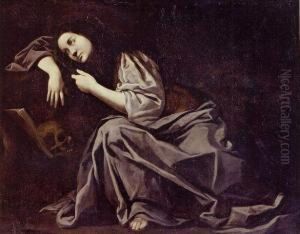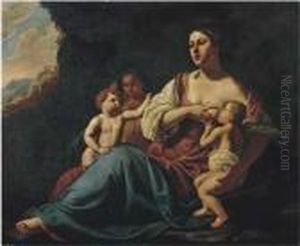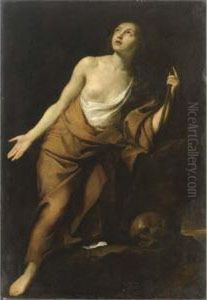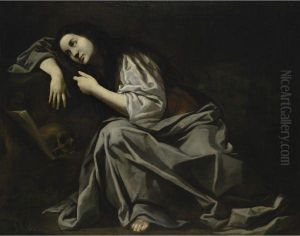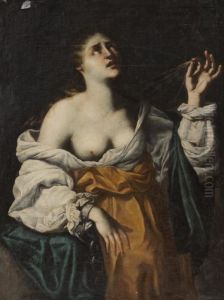Onofrio Palumbo Paintings
Onofrio Palumbo was an Italian Baroque painter, born in 1606 in Naples, which was at the time one of the most vibrant artistic centers in Italy. Not much is known about his early life, but it is likely that he was involved in the prolific art scene of Naples, which was heavily influenced by the presence of Caravaggio in the early 17th century, and later by other prominent artists such as Jusepe de Ribera, who brought the Spanish tenebrist style to Italy.
Palumbo's work is often characterized by its dramatic use of light and shadow, a technique known as chiaroscuro, which was a hallmark of Baroque painting. He was also known for his religious paintings, which were typical of the Counter-Reformation period when the Catholic Church encouraged artworks that were emotionally engaging and doctrinally clear to combat the Protestant Reformation.
Unfortunately, Palumbo's career, like that of many artists of his time, is not well-documented, and as a result, his oeuvre is not as well known or studied as that of some of his contemporaries. What is known is that he worked during a time of great competition and innovation in the arts in Naples, and his paintings reflect the dynamic and expressive style that was popular during this period.
Onofrio Palumbo died in 1656 in Naples. Despite his relative obscurity, especially when compared to giants like Caravaggio or Ribera, his work remains an example of the rich artistic environment of 17th century Naples and contributes to our understanding of the period's aesthetic and cultural values. His paintings are occasionally displayed in art historical surveys of Baroque painting in Italy, and they continue to be subjects of scholarly interest for those studying the Neapolitan school of painting.
